#Turtle shell fossil
Explore tagged Tumblr posts
Photo

Large Turtle Shell Fossil (Pleurosternum obvata) - Cretaceous, UK | Genuine + COA
Authentic Large Section of Pleurosternum obvata Turtle Shell Fossil – Durlston Formation, Cretaceous
This is a genuine large section of Pleurosternum obvata turtle shell fossil, carefully excavated from the Durlston Formation, Purbeck Beds, at Durlston Bay, Swanage, Dorset, UK. This incredible fossil dates back to the Cretaceous Period, approximately 145–100 million years ago, providing a rare glimpse into the ancient reptiles that once inhabited prehistoric ecosystems.
Guaranteed Authenticity: All of our fossils are 100% genuine and come with a Certificate of Authenticity. The specimen shown in the images is the exact fossil you will receive.
Fossil Information:
Scientific Name: Pleurosternum obvata
Location: Durlston Bay, Swanage, Dorset, UK
Formation: Durlston Formation, Purbeck Beds
Geological Age: Cretaceous (~145–100 million years ago)
Discovered By: Alister & Alison (Our Expert Fossil Hunting Team)
Discovery Date: 01 December 2024
Preparation: Expertly cleaned, prepped, and treated by Alison to enhance preservation and detail
Size & Presentation:
Scale cube = 1cm (see photos for accurate sizing)
Specimen dimensions provided in listing images
Perfect for: ✔ Fossil Enthusiasts & Collectors ✔ Educational Use & Teaching ✔ Unique Gifts for Paleontology Lovers ✔ Museum & Display Collections ✔ Natural History Exploration
Own a remarkable and rare piece of prehistoric reptilian history today! Fast & Secure Shipping Available.
#Turtle shell fossil#Pleurosternum obvata#Cretaceous fossil#Durlston Formation#Purbeck Beds#Durlston Bay fossil#Swanage fossil#UK fossils#genuine fossil#prehistoric turtle#fossilized shell#natural history#paleontology#collectible fossil#rare fossil specimen#fossil collector#museum quality fossil#reptile fossil#ancient marine life
0 notes
Text

Act like Megalochelys atlas and smile, because it’s Fossil Friday! One of the largest known land turtles, scientists think this massive reptile could reach heights of 5.9 ft (1.8 m)—tall enough to look a grown human in the eye. This specimen’s shell measures some 7.4 ft (2.3 m) long and in life, it may have weighed more than 2,000 lbs (907 kg). Megalochelys lived during the Late Pliocene about 2 million years ago. The fossil on display in the Museum’s Hall of Vertebrate Origins was found in 1922 in Chandigarh, India.
Photo: © AMNH
2K notes
·
View notes
Text

A spectacularly preserved soft-shelled turtle and fish fossil - frozen in time 50 million years ago From Green River
Photo by: Field Museum /Chicago
407 notes
·
View notes
Text


Ancient Shell-Less Turtle Species Identified From 228-Million-Year-Old Triassic Era Fossil
Eorhynchochelys
(2018)
Scientists have discovered remains of a rare kind of turtle, one that lived over 228 million years ago in the Triassic era and had no shell – the most common feature of present-day turtles. The nearly complete skeleton of the ancient turtle was found by researchers from China's Institute of Vertebrate Paleontology and Paleoanthropology in the Asian country’s Guizhou province. The animal had a toothless beak and Frisbee-shaped body just like present-day turtles, but there were no signs of growing bones that form the shell. Modern turtles use the feature to enclose their vital organs, including the head in some cases, and protect themselves "This creature was over six feet long, it had a strange disc-like body and a long tail, and the anterior part of its jaws developed into this strange beak," Olivier Rieppel, one of the researchers involved in the work, said in a statement. "It probably lived in shallow water and dug in the mud for food." As no such turtle has been described in the books of science, the animal has been classified as a completely new species. It has been named Eorhynchochelys sinensis, which means the ‘Dawn turtle with a beak from China’...
Read more: Ancient Shell-Less Turtle Species Identified From 228-Million-Year-Old Triassic Era Fossil | IBTimes
#prehistoric#paleontology#fossils#turtle#evolution#turtle evolution#animals#nature#china#asia#reptile#herpetology#science
369 notes
·
View notes
Text
#2829 - Psephophorus terryprachetti - Pterry's Giant Pturtle

A very large, extinct, leatherback turtle from the Eocene, named after beloved author Terry Pratchett. He was pleased about this, saying that anybody that wasn't delighted about getting a species named after them was clearly a Pod being from the Planet Zog.
The first fossils from the genus were discovered by German Paleontologist Christian Erich Hermann von Meyer in 1846, but all he had were the dermal plates (not that different from the fossil above, really). That's probably why even by 1879, they still weren't clear on what it actually was - British paleotologist Harry Govier Seeley thought they resembled the armour of an armadillo.
The Pturtle was discovered in New Zealand in the 1990s. It would have been 2.5m long, in life.
Sadly, there's only one Dermochelyid turtle left in the world - the Leatherback Dermochelys coriacea, which is critically endangered in some areas. Leatherbacks are unique compared to other modern sea turtles because they lack a bony shell; instead, its carapace is covered by oily flesh and flexible, leathery skin. They're also the deepest-diving and fastest reptiles in the world, swimming down to over 1200m depth, at speeds of up to 35kph. Their constant activity and internal adaptations lets them run at a surprisingly high internal temperature - 18C above the surrounding water.
The biggest threat to leatherback survival is, unfortunately, humanity - hatchlings can be confused by artificial light and head inland instead of towards the water, older turtles are easily caught in fishing nets, and they can confuse plastic bags floating in the water for the jellyfish that form the bulk of their diet.
Otago Museum, Dunedin, Aotearoa New Zealand.
#Otago Museum#Dunedin#Dermochelyidae#Psephophorus#leatherback turtle#new zealand fossil#fossil turtle#terry pratchett#great a'tuin
210 notes
·
View notes
Text
Round 3 - Mammalia - Monotremata




(Sources - 1, 2, 3, 4)
Our first and most ancient living order of mammals is Monotremata. There are five living species of monotreme: one Platypus (image 1) and four echidnas. These are the Short-beaked Echidna (Tachyglossus aculeatus) (gif below), Attenborough’s Long-beaked Echidna (Zaglossus attenboroughi) (image 4), the Western Long-beaked Echidna (Zaglossus bruijnii) (image 2), and the Eastern Long Beaked Echidna (Zaglossus bartoni) (image 3).
Monotremes have structural differences in their brains, jaws, digestive tract, reproductive tract, and other body parts, compared to many other mammals, though they are most often differentiated by the fact that they are the last remaining order of mammals to lay eggs. All living species lack teeth as adults, though platypuses have them as babies. All living species have spurs on their hind limbs, though they are vestigial in echidnas. In male platypuses they are attached to venom glands and contain venom powerful enough to kill predators as large as a dog. Monotremes have 400-40,000 electroreceptors on their snouts, depending on species, which they use to locate invertebrate prey buried beneath sediment. All living species of monotremes are indigenous to Australia and New Guinea, though Cretaceous species were also found in South America.
Monotremes possess five pairs of sex chromosomes and one of the X chromosomes resembles the Z chromosome of birds, suggesting that the two sex chromosomes of other mammals evolved after the split from the monotreme lineage. Like reptiles, monotremes have a cloaca, which is a single opening for both reproduction and waste removal. However, urine is excreted through the cloaca while semen passes through the male monotreme’s penis. The monotreme penis is similar to that of turtles and is covered by a preputial sac. Monotreme eggs are soft-shelled and leathery. They are retained for some time within the mother and receive nutrients directly from her, generally hatching within ten days after being laid. Newly hatched monotremes are called “puggles,” and are fetus-like, with relatively well-developed forelimbs that enable them to crawl around. Female monotremes do have mammary glands and nurse their young with milk, though they lack teats. Instead, mother monotremes lactate via pores in their skin, “sweating” out the milk. All five living species show prolonged parental care of their young, with low rates of reproduction and relatively long life-spans.
Monotremes arose in the Early Cretaceous. Some of the oldest known platypus-like fossils are Steropodon and Dharragarra of the Late Cretaceous. Our living platypus is also known from Pliocene fossils.
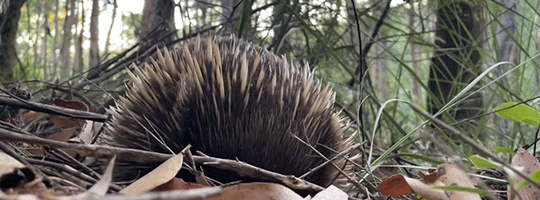
Propaganda under the cut:
Monotremes maintain a lower average temperature than most mammals, conserving energy by "switching off" their temperature regulation and going dormant in cold weather.
The tongues of long-beaked echidnas (genus Zaglossus) have sharp, tiny spines that help them capture their termite, ant, and worm prey. Since they have no teeth, they break down their food by grinding it between the bottoms of their mouths and their tongues.
Monotreme milk contains a highly expressed antibacterial protein not found in other mammals.
Monotremes are the only mammals (apart from the Guiana Dolphin [Sotalia guianensis]) known to have a sense of electroreception, and the Platypus's electroreception is the most sensitive of any monotreme.
In the American animated series Phineas and Ferb, the title characters own a pet bluish-green Platypus named Perry who, unknown to them, is a secret agent. Coincidentally, and unbeknownst to show creator Dan Povenmire at the time, real platypuses biofluoresce a similar cyan colour when seen under ultraviolet lighting!
The longest recorded lifespan for an echidna in human care was 50 years, with anecdotal accounts of wild individuals reaching 45 years.
Venom production rises among male Platypuses during the breeding season, and it may be used to assert dominance.
I’m really sorry about more penis talk but we’re all adults here I hope. So… male echidnas have a four-headed penis, covered in penile spines. During mating, the heads on one side "shut down" and do not grow in size; the other two are used to release semen into the female's two-branched reproductive tract. Each time it copulates, it alternates heads in sets of two. When not in use, the penis is retracted inside a preputial sac in the cloaca. During mating season, a female may be followed by a line or "train" of up to ten males, the youngest trailing last, with some males switching between lines.
In 1799, the first scientists to examine a preserved Platypus body deemed it a hoax made of several animals sewn together.
Echidnas are very timid. When frightened, they attempt to partially bury themselves and curl into a ball similar to a hedgehog. Strong front arms allow echidnas to dig in and hold fast against a predator pulling them from the hole.
The rarest species of monotreme is the critically endangered Attenborough's Long-beaked Echidna (Zaglossus attenboroughi). It had only been seen once in 1961 in the Cyclops Mountains of the Indonesian province of Papua. It was thought to be extinct until some of its "nose pokes" (holes from the echidna’s nose poked into the ground as it searches for earthworms) were found in the mountains during an expedition in 2007. Finally, in November 2023, the first video footage of a living individual was recorded (image 4).
The Platypus holds special meaning as a totem animal for the Watiwati people, who live along the Murray River.
#SORRY I FORGOT TO EDIT THE POLL TO SAY MONOTREMATA INSTEAD OF X AND I CAN’T CHANGE IT NOW 😭#idk how I missed that ;_;#Mammalia#animal polls#Round 3
135 notes
·
View notes
Text
Fossil Friday: Archelon
Apparently, there is a sea turtle protection society in Greece by this name which is cool but I a here to talk about the ACTUAL sea turtle called Archelon ischyros. Archelon lived in the Late Cretaceous Period about 80-74 Ma. At the time, the American Midwest was overed by the Western Interior Seaway.
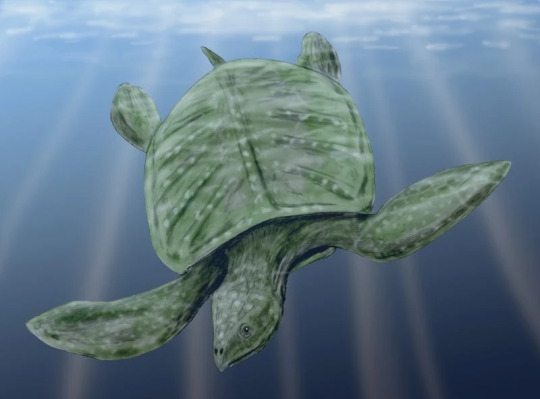
It was discovered by American paleontologist George Reber Wieland in 1895 in the Pierre Shale, a rock formation made of mostly, well, you guessed it, shale. Shales accumulate at depth in ocean basins.
Archelon lived alongside the mosasaur Platycarpus,

sharks,

(Squalus)
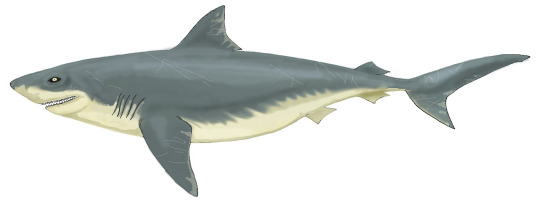
(Squalicorax)
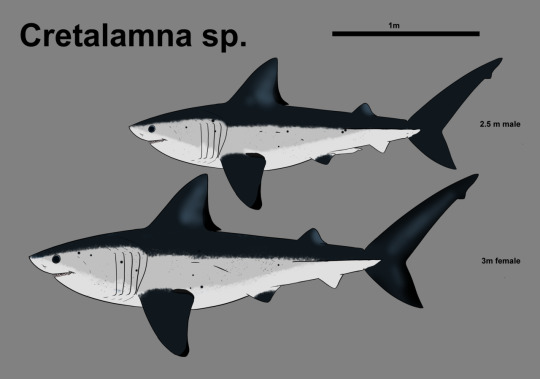
predatory ray-finned fish, Xiphactinus,
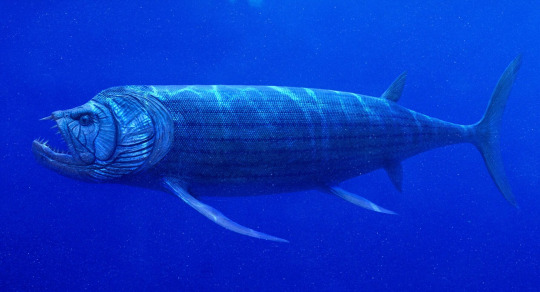
and an array of ammonites.
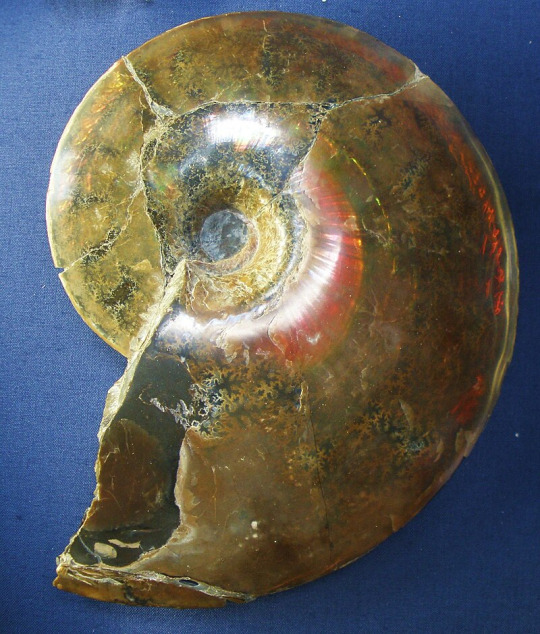
(Planticeras)

(Scaphites)
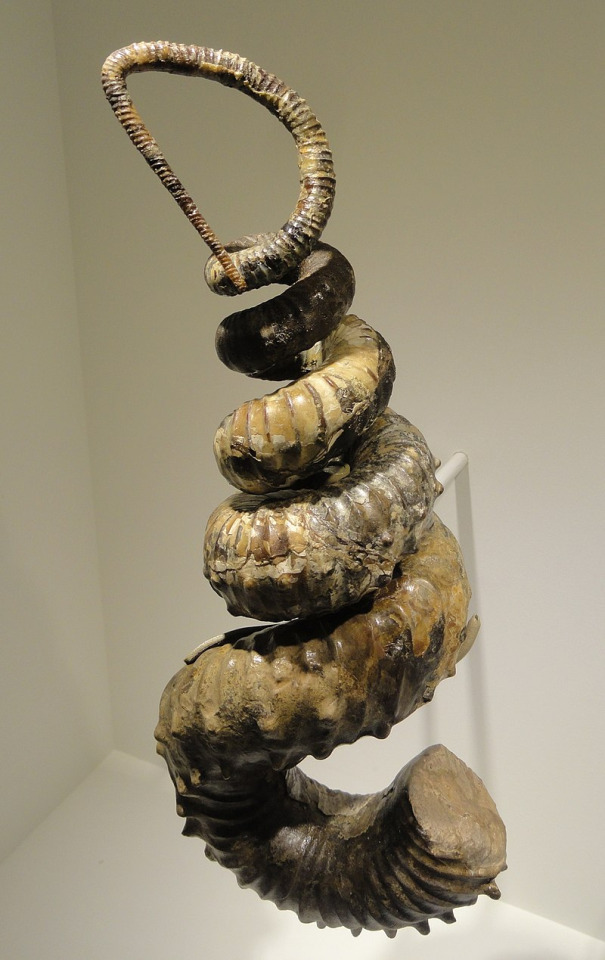
(Didymoceras)
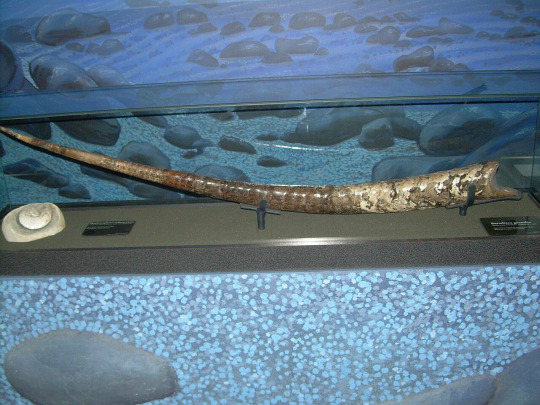
(Baculites)
Turtle phylogeny has been hotly contested for a long while thanks to their very strange morphologies (lacking extra openings in the skull, ribs and vertebrae expanding to create a shell). As of right now, most studies put them somewhere between lepidosaurs (lizards and snakes) and archosaurs (crocs and birds). It's debatable which they are closer to.
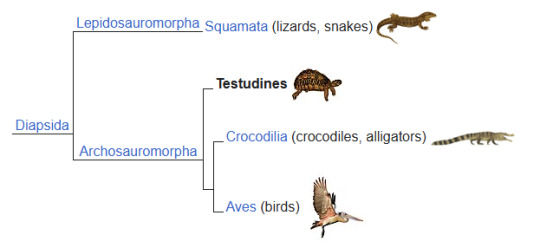
Either way, Archelon falls solidly into testudines, specifically in the clade protostegidae. This clade is completely extinct but their closest living relatives are living sea turtles.
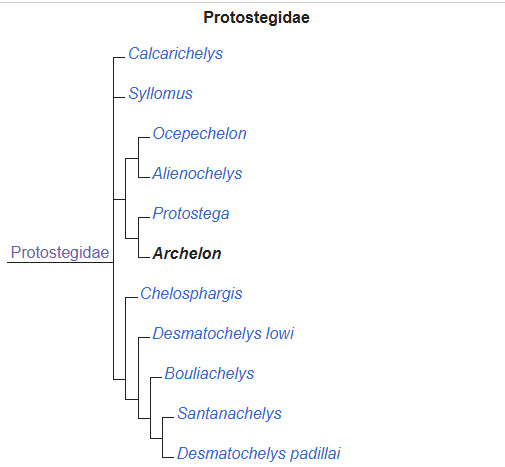
Archelon was the largest turtle to have lived at 11.5 ft long (352 cm). The largest specimen named Brigitta reached 15 ft (4.6m) in length. It had a pronounced hooked beak like a bird of prey indicating it was an obligate carnivore (must eat meat).

It's weak front flippers are similar to cheloniids (a group of living marine turtles) and indicate it probably preferred calm shallow waters to the deep sea. (Then again, it may be more like the Leatherback Sea Turtle than we realize and was a moderately good swimmer that could chase prey in the open ocean).
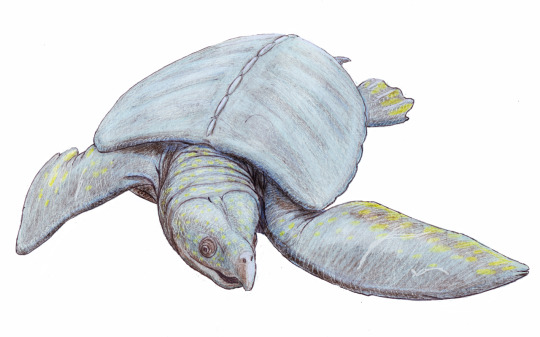
Overall, Archelon is a pretty cool animal. Have a good weekend and tune in Monday for another shiny metal. Fossilize you later!
#paleontology#fossils#fun facts#geology#science#science education#march madness#turtles#archelon#sea turtles#fossilfriday
27 notes
·
View notes
Note
You two goobers remind me of dinosaurs, and I do mean that as the highest of compliments! :D
Jervis over there, with his buck teeth and cuddly ole' dog behavior, reminds me of the Daemonosaurus chauliodus, which is Greek for Buck-Toothed Evil Spirit. The dinosaur, which stood as tall as a large dog, boasts a very unusual skull. It has a deep, short snout and these monstrous front teeth. That's a kind of skull structure for a predatory dinosaur that's really unexpected for as early as the Triassic Period. It's known only by its fossilized skull and neck vertebrae. But the fossils show that the dinosaur has several features including cavities in its vertebrae linked to the respiratory system that bridge the evolutionary gap between the earliest dinosaurs and the neotheropods, the next group of predatory dinosaurs to evolve. It's an adorable doggy with buck teeth, like Jervis!
Brownie here reminds me much of a stegosaurus. Stegosaurus is famous for its two rows of kite-shaped plates that stick out from its neck, back, and tail. But the paleontologist who first discovered a Stegosaurus fossil thought the plates laid flat on its back like a turtle’s shell. That’s why its name in Greek means roof lizard. It's also thought that the plates along its back could change color with its mood, like a chameleon! And you're so great at changing your appearance that I couldn't think of a better dinosaur!

How funny that I'm a little dinosaurs. Loving how passionate you are about them, AND YOU'RE RIGHT! They were extraordinary animals.
STEGOSAURUS IS MY MOM'S FAVOURITE THANK YOU THAT'S ADORABLE 😁. She thinks they look punk and cool! Also what does "wield that flip flop" means? (French a$$ who understands nothing)
15 notes
·
View notes
Text
Crystal Palace Field Trip Part 1: Walking With Victorian Monsters
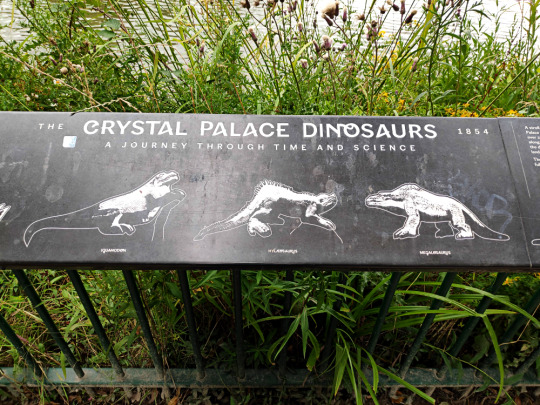
The Crystal Palace Dinosaurs take their name from the original Crystal Palace, a glass-paned exhibition building originally constructed for a World's Fair in Hyde Park in 1851.
In 1854 the structure was relocated 14km (~9 miles) south to the newly-created Crystal Palace Park, and a collection of over 30 life-sized statues of prehistoric animals were commissioned to accompany the reopening – creating a sort of Victorian dinosaur theme park – sculpted by Benjamin Waterhouse Hawkins with consultation from paleontologist Sir Richard Owen.
The Palace building itself burned down completely in 1936, and today only the ruins of its terraces remain in the northeast of the park grounds.

The Crystal Palace building then and now Left image circa 1854 (public domain) Right image circa 2011 by Mark Ahsmann (CC BY-SA 3.0)
Six sphinx statues based on the Great Sphinx of Tanis also survive up among the Palace ruins, flanking some of the terrace staircases. They fell into serious disrepair during the latter half of the 20th century, but in 2017 they all finally got some much-needed preservation work, repairing them and restoring their original Victorian red paint jobs.

———
…But let's get to what we're really here for. Dinosaurs! (…And assorted other prehistoric beasties!)
The "Dinosaur Court" down in the south end of the park still remains to this day, displayed across several islands in a man-made lake. Over the decades they've been through multiple cycles of neglect and renovation, and are currently cared for by the London Borough of Bromley (Crystal Palace Park Trust are due to take over custodial duties in September 2023), with promotion and fundraising assistance from organizations like Historic England and the Friends of the Crystal Palace Dinosaurs charity.
Just about 170 years old now, the Crystal Palace Dinosaurs represent fifteen different types of fossil creatures known to 1850s Victorian science, with only three actual dinosaur species featured. Although often derided for being outdated and very inaccurate by modern standards, they were actually incredibly good efforts at the time, especially taking into account that the field of paleontology was still in its very early days.
They also just have a lot of charm, with toothy grins and surprisingly dynamic poses.
Unfortunately on the day I visited in early August 2023 most of the statues were heavily obscured by plant growth, both on their islands and on the sides of the paths they can usually be viewed from. Since I'd seen images from about a month ago showing things being less overgrown, this was probably just some unlucky timing on my part coinciding with some explosive summer foliage growth.
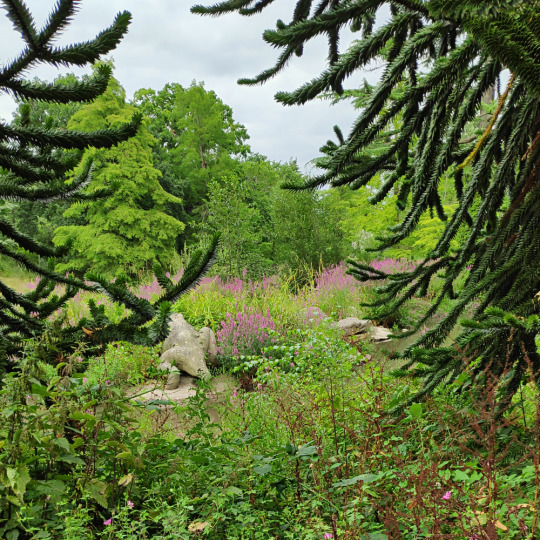
The first island on the trail features a few Permian and Triassic animals which were only known from fragmentary remains in the 1850s. These "labyrinthodonts" were recognized as having similarities to both amphibians and reptiles, and so were depicted with boxy toothy jaws, warty skin, stumpy tails, and long frog-like back legs.
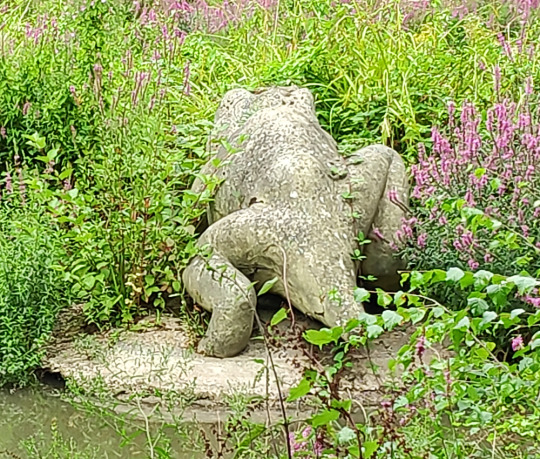
Today we'd call these particular animals temnospondyl amphibians, specifically Mastodonsaurus, and we know they were actually shaped more like giant salamanders with longer flatter crocodilian-like jaws, smaller legs, and long paddle-like tails.

———

Somewhere in the foliage beyond this specific "labyrinthodont" there was also supposed to be a pair of dicynodonts, but I couldn't see much of them at all and didn't manage to get a remotely visible photograph.
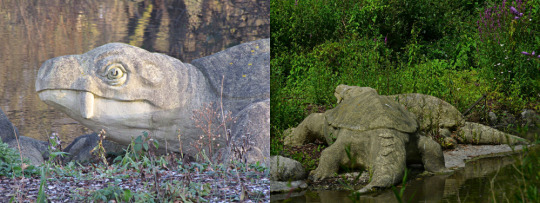
Crystal Palace Dicynodon when much less overgrown Left photo by London looks (CC BY 2.0) Right photo by Loz Pycock (CC BY SA 2.0)
These Dicynodon are depicted as looking like sabre-toothed turtles complete with shells. That was fairly speculative even for the time, but considering only their weird turtle-beaked-and-walrus-tusked skulls were known it was probably the best guess Hawkins and Owen had. Today we know these animals were actually synapsids related to modern mammals, but Victorian understanding considered them to be a type of reptile.
Modern reconstructions of dicynodonts have a slightly different face shape, along with squat pig-like bodies and semi-sprawling limbs. They may have had fur, but currently the only known actual skin impressions from the genus Lystrosaurus show leathery bumpy hairless skin.

———
Next time: the Jurassic and Cretaceous sculptures!
#field trip!#crystal palace dinosaurs#retrosaurs#i love them your honor#crystal palace park#crystal palace#labyrinthodont#temnospondyl#mastodonsaurus#dicynodont#dicynodon#synapsid#paleontology#vintage paleoart#art
387 notes
·
View notes
Text
Crystal Clearance Sale July 26th - 29th Complete List
To claim an item, please comment on the individual post. The complete rules can be found here. Please be sure to read the rules before claiming :)
Rainbow Fluorite Points
Blue Fluorite Models - Sold Out!
Pastel Fluorite Roses
Rainbow Fluorite Pentacles
Rainbow Fluorite Dragon Skulls - Sold Out!
Rainbow Obsidian Crescent Moons
Candy Fluorite Sphere Sets
Morganite Pyramids
Labradorite Butterflies
.925 Rainbow Quartz Pendants
.925 Rainbow Moonstone Pendants
.925 Black Tourmaline Pendants
.925 Blue/Green Tourmaline Pendants - Sold Out!
Angel Aura Fluorite Butterflies
Large Purple Fluorite Spheres
Purple Fluorite Spheres - Sold Out!
Faceted Labradorite Bracelets - Sold Out!
Faceted Amethyst Bracelets - Sold Out!
Faceted Black Tourmaline Bracelets - Sold Out!
Faceted Rainbow Moonstone Bracelets
Faceted Blue Apatite Bracelets - Sold Out!
Faceted Amazonite Bracelets
Faceted Sunstone and Moonstone Bracelets
Faceted Pink Aventurine Bracelets
Faceted Tourmalinated Quartz Bracelets
Faceted Fluorite Bracelets
Pink Opal Palm Stones
Bolivianite Palm Stones - Sold Out!
Rhodochrosite Palm Stones
Tourmalinated Citrine Freeforms - Sold Out!
Opalized Fluorite Palm Stones - Sold Out!
Harlequin Jade - Sold Out!
Round Scenic Quartz Gems
Mexican Natural Citrine
Blue Calcite Starfish - Sold Out!
Blue Calcite Palm Stones - Sold Out!
Blue Barite Specimens - Sold Out!
Epidote Clusters
Forest Quartz
Grape Agate Clusters - Sold Out!
Black Tourmaline Crystals
Cobaltoan Calcite
Fossilized Snail Shells
UV Reactive Calcite
.925 Sterling Silver Meteorite Pendants - Sold Out!
Moldavite Bracelet - Sold Out!
.925 Aquamarine Pendant - Sold Out!
Included Quartz Cabochons
Sparkly Druzy Agate Points
Trolleite Obelisk - Sold Out!
51. Chevron Amethyst Wands - Sold Out! 52. Rainbow Fluorite Turtle - Sold Out! 53. Rainbow Obsidian Freeforms 54. Agate and Amethyst Crescent Moons 55. Amethyst & Calcite Specimens 56. Unique Fluorite Specimens 57. Rainbow Obsidian Spheres - Sold Out! 58. .925 Watermelon Tourmaline Pendants 59. Pink and Red Chalcedony Geodes 60. Prehnite Clusters 61. Agate & Amethyst Flame Freeforms
40 notes
·
View notes
Photo

RARE: Turtle Exoskeleton Fossil – Barton Beds, Eocene, Whitecliff Bay, Isle of Wight UK
This listing features a rare fossilised turtle exoskeleton fragment, sourced from the Barton Beds at Whitecliff Bay, Isle of Wight, UK. This specimen dates to the Eocene Epoch, making it over 40 million years old and a significant piece of the UK’s palaeontological heritage.
Fossil Type:
Specimen: Turtle Exoskeleton (Shell fragment – likely carapace or plastron)
Represents a chelonian (turtle or tortoise) from the Eocene vertebrate assemblage of southern England
Geological Context:
Period: Paleogene
Epoch: Eocene
Stage: Bartonian (~41.3 to 38 million years ago)
Formation: Barton Group (formerly part of the “Barton Beds”)
Depositional Environment: Coastal lagoon and estuarine settings. The Barton Beds were laid down in a warm, subtropical marine and marginal marine environment rich in vertebrate and invertebrate fossils.
Morphological Features:
Curved or slightly flattened dermal bone typical of chelonian shell fragments
Surface may show granular texture or faint impressions of scute boundaries
Brown-grey fossilisation with natural wear and mineralisation from estuarine clays
Scientific Importance:
Fossil turtle material from the Barton Beds is rare and valuable for understanding Eocene coastal ecosystems in Britain
Specimens like this may be attributable to genera such as Trionyx or other soft-shelled or hard-shelled turtle lineages found in European Eocene sites
These fossils help reconstruct the palaeobiogeography of marine reptiles in the early Cenozoic
Locality Information:
Whitecliff Bay, Isle of Wight, UK – a historically significant fossil site with well-exposed Barton Beds yielding both marine and terrestrial Eocene fossils. A known locality for rare turtle remains, crocodile teeth, and fish fossils
Authenticity & Display:
All of our fossils are 100% Genuine Specimens and are provided with a Certificate of Authenticity. The photographs show the actual fossil for sale. Please see the photo for full sizing – note that the scale rule cube = 1cm.
This is a scientifically intriguing and display-worthy Eocene turtle exoskeleton fossil from one of Britain’s most productive fossil sites. A fine addition to any fossil collection, especially for those interested in ancient reptiles or the palaeontology of the British Isles.
Own a real piece of early Cenozoic history—fossilised remains from over 38 million years ago!
#Turtle exoskeleton fossil#Barton Beds fossil turtle#Eocene turtle shell#Whitecliff Bay fossil#Isle of Wight fossil reptile#rare UK turtle fossil#Eocene vertebrate fossil#fossil carapace fragment#British fossil turtle shell#certified turtle fossil specimen
0 notes
Text

Act like Megalochelys atlas and smile, because it’s Fossil Friday! One of the largest known land turtles, scientists think this massive reptile could reach heights of 5.9 ft (1.8 m)—tall enough to look a grown human in the eye. This specimen’s shell measures some 7.4 ft (2.3 m) long and in life, it may have weighed more than 2,000 lbs (907 kg). Megalochelys lived during the Late Pliocene about 2 million years ago. The fossil on display in the Museum’s Hall of Vertebrate Origins was found in 1922 in Chandigarh, India.
Photo: © AMNH
#science#amnh#museum#fossil#nature#natural history#animals#paleontology#turtle#herpetology#did you know#fact of the day#pliocene#fossil friday#cool animals#turtles#smile#ancient animals#reptiles
2K notes
·
View notes
Text


Literally haven’t posted paleoart in the same span between now and the fucking Jurassic but here’s a dilophosaurus I did from memory at a Tyrrell internship/youth camp type thing lol (PLUS A FOSSILIZED TURTLE SHELL I FOUND WHILE PROSPECTING) uhhhh I’m still super autistic for ATLA rn tho so prob won’t post a lot more lmfao
Enjoy it while it lasts (probably gonna draw more dinosaurs again soon tho bc I have a school project I’m doing about like either translation of Saurischian hips into bird hips or uhh fossilized evidence of parental care in the Mesozoic I’m DEAD)
#art#paleoart#dinosaur#dilophosaurus#theropod#theropoda#Jurassic#sketch#royal tyrrell museum#Royal tyrrell
24 notes
·
View notes
Text
An extinct sofa-sized turtle may have lived alongside humans
The turtle had a nearly 2-meter-long shell and may have lived as recently as 9,000 years ago
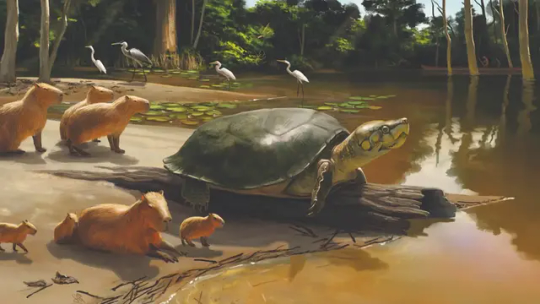
As little as 9,000 years ago, a sofa-sized turtle paddled around the Brazilian Amazon.
The finding, based on a fossilized jawbone, reveals that some of the most massive turtles ever lived relatively close to the modern day. The turtle lived so recently, in fact, it’s possible that people living in South America encountered it, researchers report in the March Biology Letters.
In 2007, gold miners digging near the Amazonian city of Porto Velho uncovered the fossilized remains, later determined by researchers to be part of a turtle’s lower jaw. And it was big.
“When I saw the material, I was very excited because of its size, so we managed to bring the specimen to our lab” at the University of São Paulo, says vertebrate paleontologist Gabriel Ferreira, now at the University of Tübingen in Germany.
Continue reading.
#brazil#science#biology#paleontology#DEFEND BRAZILIAN SCIENCE#GIANT TURTLES GIANT TURTLES GIANT TURTLEEEEEEEEEEEEEEEEEEEEEEEEEEEEEEEEEEEES#mod nise da silveira#image description in alt
44 notes
·
View notes
Note
Any fossil Pokémon you’ve not reviewed yet you wanna do? Favourite or least favourite, either way
(I'll be doing the Tirtouga line because they're the only fossil 'mons I haven't reviewed yet:)
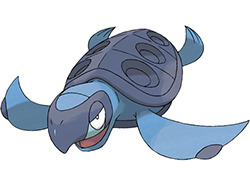
To be completely honest, I constantly forget Tirtouga exists. I think it's because it's Just A Turtle; there's no real clear theme at this stage, and there's not really anything about the design that sticks out other than the lovely gray and blue color palette.
Part of the problem is that while Tirtouga and its evo are based off of extinct giant turtles (Protostega and the massive Archelon, respectively), turtles... you know, still exist in the modern day. And because they still exist, there are a lot of other turtle and tortoise 'mons, like the Squirtle line, Torkoal, Terapagos, the Turtwig Line, etc. Sure, it's technically the only sea turtle 'mon, but that's not enough to inherently differentiate it and make it interesting.
Given the direction the evo takes, I kind of would've liked to see more emphasis on the shell; make it giant and bulky relative to the body, make it extend up over the head, etc. It's nice enough visually, but it really needs something that would make it stand out.
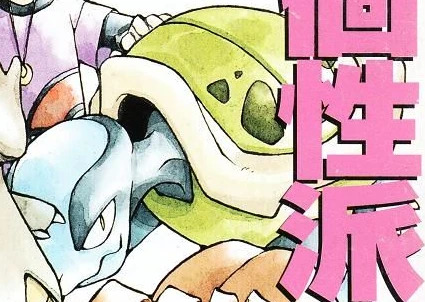
(Fun pointless fact: Ken Sugimori once drew an illustration for a magazine cover featuring a bunch of fake Pokemon-esq creatures, one of which (above) likely became Tirtouga later on. This is probably why it evolves from the "cover fossil". This fact is more interesting than the actual 'mon.)
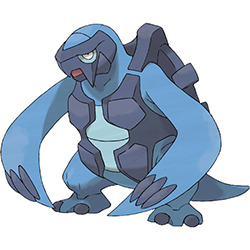
Carracosta has something going for it by standing up and becoming bipedal. This isn't unheard of for either turtle 'mons (Blastoise) or fossil 'mons (Kabutops), but it instantly gives it something distinct and visually differentiates it from its pre-evo.
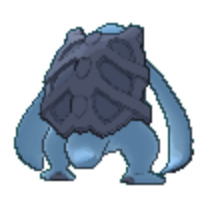
The other thing it has is a very unique shell design, which is segmented like ribs that stretch around the shoulders/legs and doesn't wrap over the stomach. It's likely meant to look like a bullet-proof vest, which is sort of random but it at least pretty cool looking. It strikes me as very classic Gen 1/Gen 2-ish design, despite being a Gen 5 'mon; it's something in the way it stands up and the bony yet somewhat organic shell design that does it.
My only nitpick here is that the ridges on the flippers look out-of-place, as that shape isn't shared anywhere else in the design. It feels like it needed to reuse the bulkly polygonal shapes from the front "vest" to create a pair of brass-knuckle like covers that wrap around the entire flipper. Otherwise, this one's pretty solid.
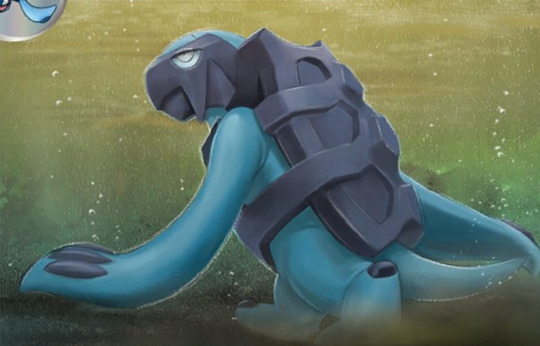
Overall, Tirtouga is too generic for its own good, but Carracosta's pretty neat and has a solid design. There could be room for regionals down the line, if you assume the line adopted to other regions before dying out originally.
50 notes
·
View notes
Text
Round 2 - Arthropoda - Thecostraca




(Sources - 1, 2, 3, 4)
Thecostraca is is a class of crustaceans, many of which have planktonic larvae which become sessile or parasitic as adults. The most well-known group are the Barnacles (subclass Cirripedia), but Thecostraca also includes the parasitic Ascothoracida, and the mysterious Facetotecta.
Facetotecta, comprising only the genus Hansenocaris, are known only from their larvae (image 3) and adults have yet to be recognized, though some scientists believe they may actually be larval tantulocaridans.
Ascothoracidans are parasites of echinoderms and cnidarians. Most genera are meso and endoparasitic (living inside the host) while some are ectoparasitic (living on the outside of the host). They are similar in anatomy to copepods, with six pairs of legs, an abdomen with four segments, a telson, and a bivalved carapace. They feed on their host via piercing and sucking mouthparts, and some more advanced species also absorb nutrients through the carapace. They are sexually dimorphic, in many cases so much so that the smaller males will live inside the larger female’s mantle cavity.
Barnacles (subclass Cirripedia) are more well-known than other Thecostracans. Adult barnacles are sessile filter feeders, except for the infraclass Rhizocephala, which are parasites of other crustaceans. Barnacles attach themselves to a surface as adults, be that a rock, the shell of a mollusc, a ship, or a large animal such as a whale. They come in two common forms: acorn barnacles which grow their shells directly on a surface (image 4) and goose barnacles which attach themselves via a stalk (image 1). Barnacles have a carapace made of six calcareous plates, with a lid made of four more plates. They attach themselves to the substrate by means of a cement gland at the base of their antennae. Eight pairs of thoracic limbs, called cirri, extend from the carapace to filter plankton from the water and bring it towards the mouth. The hairs on these limbs are very sensitive to touch, and help the barnacle sense the world around them. They also have three simple eyes (ocelli) which can sense changes in light, allowing them to close their plates quickly if a shadow is detected.
Thecostracans have nauplius larvae, characterised by a head with antennules, antennae, mandables, and a single eye, three pairs of limbs, a carapace, and a telson. Barnacle larvae are brooded by the parent until their first moult, after which they are released to swim freely using setae.
The oldest known thecostracan fossil is dated from the Middle Cambrian. Traces of the parasitic forms have been dated from the Cretaceous.

Propaganda under the cut:
Barnacles have the longest penis (relative to body size) of any living animal. You can see it in action in the above gif and in this video.
Most barnacles are not parasitic (other than hitching a ride) and usually do no harm to the large animals they attach to. An overload of barnacles tends to be a symptom of an underlying issue, such as the animal being unable to shed its skin. Non-professionals scraping or pulling barnacles off of whales and turtles often does more harm than good for the affected animal!
12th-18th Century Europeans thought that Brants and Barnacle Geese emerged, fully formed, from Goose Barnacles. Gerald of Wales claimed to have seen the birds hanging down from pieces of timber, William Turner accepted the theory, and John Gerard claimed to have seen the birds emerging from their shells. In County Kerry, until relatively recently, Catholics abstaining from meat during Lent could still eat this bird because it was considered a fish.
As filter-feeders, barnacles play an important role in the ecosystem: not only for transferring nutrients up the food chain, but also for keeping the water clean.
When a barnacle chooses its home, it produces a biological glue made of six different proteins. While the glue hardens, it accumulates limestone salts, turning into a concrete-like shell. Barnacle glue is six times stronger than any manmade glue. Scientists are trying to replicate this glue for use in the fields of engineering, construction and medicine, where it can be used as a biological sealant during or post-surgery.
#i could add SO MUCH more but I am trying to make these descriptions shorter both for your sake and for mine#looking forward to narrowing these down to smaller groups in later rounds where I won’t have to write So Dang Much#anyway crabs are coming in the next one#round 2#animal polls#arthropoda#thecostraca
37 notes
·
View notes